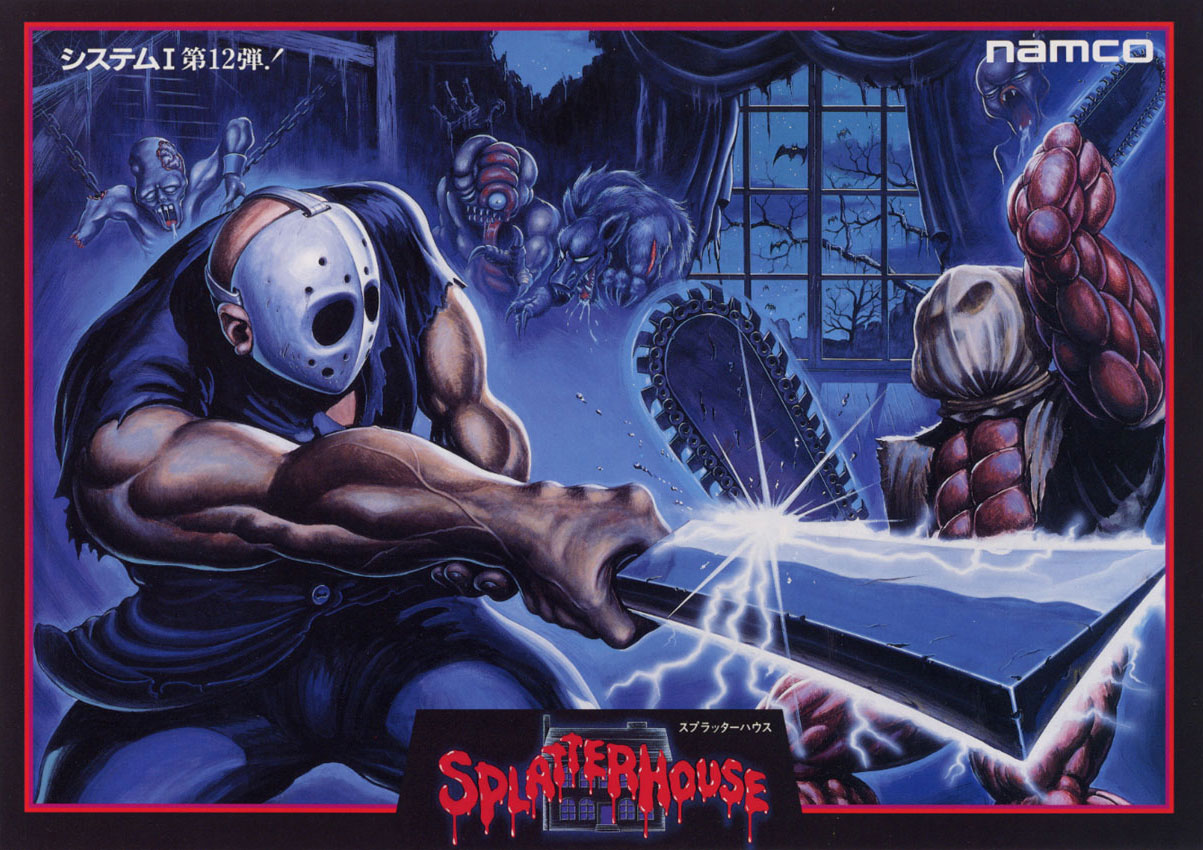
There was a time when video game developers were very open and blatant with their inspiration. Often times, the artists wouldn’t bother being coy or shy with what influenced them and would rip off Hollywood movies.
It was a wild west for game creators to simply take stuff they liked, and make games about it. Hideo Kojima managed to keep his First Blood: Part II inspired game going for over 30 years. Games have always been inspired by unusual media that we consume, but is it possible to go too far?
The arcade version of Splatterhouse is so bold to lift many influences from 1980 horror films that it becomes its identity. This melting pot of sleazy horror cinema has become the one thing that has kept Splatterhouse from fading into memory. Without its vivid horror pastiche, does it still hold up?
Splatterhouse (Arcade)
Developer: Namco Splatter Team
Publisher: Namco
Platforms: Arcade, TurboGrafx-16, FM Towns, iOS, Xbox 360 (unlockable feature in Splatterhouse 2010), PlayStation 3 (unlockable feature in Splatterhouse 2010), Nintendo Switch (reviewed, via Namco Museum compilation)
Release Date: February 1989, July 28, 2017 (via Namco Museum)
Players: 1
Price: $29.99 (Namco Museum)
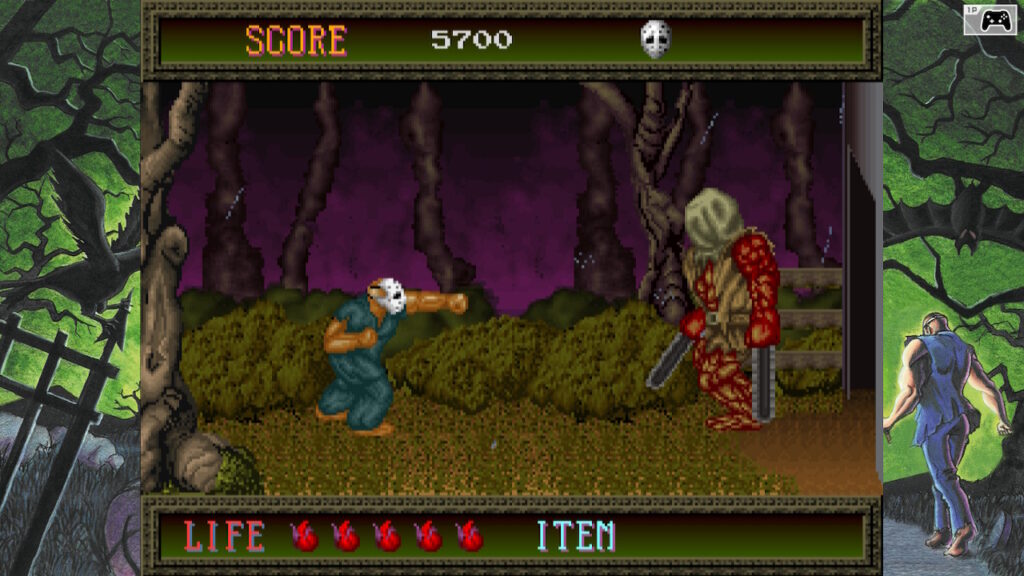
Of course Splatterhouse does not hold up. This was coin-op arcade game that was designed to suck you dry of quarters. There is never a moment of fair design at all in any level.
There are swarms of enemies that move too fast, and come from too many directions that make it impossible to avoid taking damage. There is no way to memorize any patterns, since most of the time that the game is reacting to your placement on screen.
Rick controls responsively; his punches have decent reach and he isn’t overly animated. His sprite is fittingly huge; which is appropriate for being a roided-up, Jason Voorhees knock-off.

The 4:3 aspect ratio does not do the gameplay favors, since Rick is also very slow moving. The instant wall of death that is constantly creeping behind him can easily sneak up before you can react.
Rick has to keep moving to the right, murdering anything and everything that moves. The possessed severed hand from The Evil Dead II, the deformed head guy from Basket Case, and worms that are either referencing the chest-burster from Alien or the creature from The Deadly Spawn, are enemies in Splatterhouse.
This cavalier approach to lifting creatures from horror movies with no regard for legal action is something that never happens anymore. Seeing so many bootleg versions of movie monsters becomes a meta game in itself to identify who’s who.
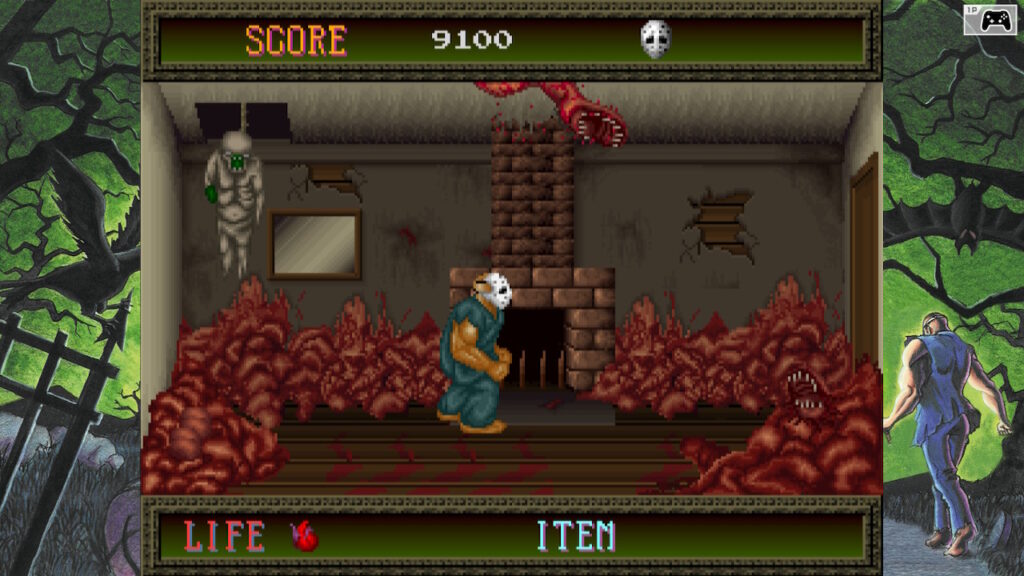
Sometimes Rick will come across some areas that have pits, and falling into these will reveal an alternate but also harder route. These optional paths are relentlessly punishing; often requiring Rick survive swarms of enemies in an area where the screen moves too slow.
One possible route will trap Rick in a room full of undead boys who keep respawning, and the only way out is to kill the flying necromancer to put the dead to rest and clear a path. Getting into these traps is usually a death sentence. Even with infinite credits Rick will always only get three lives, and losing them means starting the entire stage over.
Playing carefully and defensively all the time is not viable, since there is a hazy wall of death creeping behind Rick at all times except bosses. The stressful situation demands the player to manage their time and aggression, so as to not play too safely or too hastily.
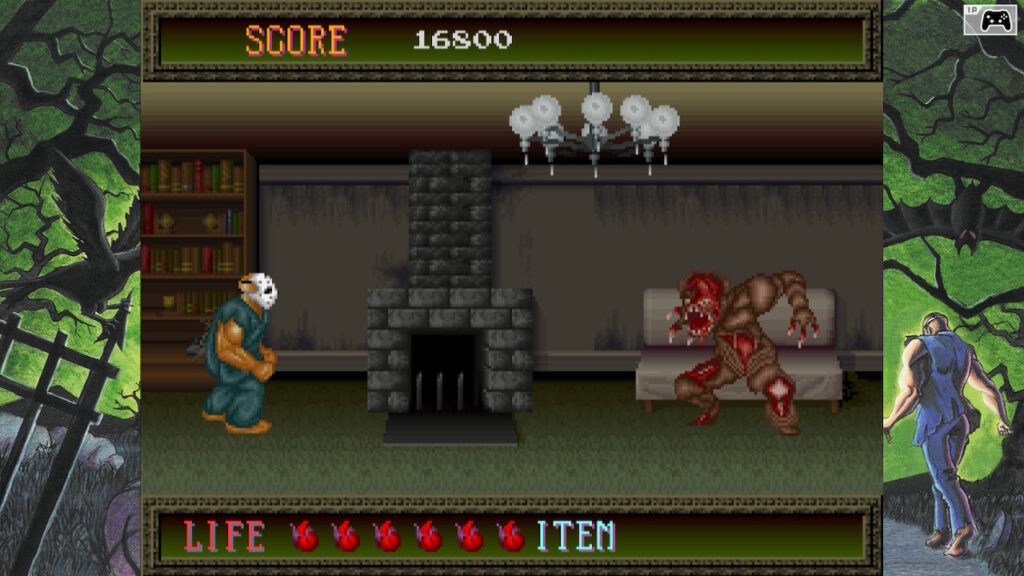
Continuing is painful since the difficulty can be so high, getting by unscathed sometimes means having a little luck on your side. Rick will need every sliver of health, since bosses will almost always rob you of all your lives and will send him back to the start of the level.
Success comes down to memorizing patterns and timing when specific threats appear. It is cheap and sleazy arcade design at its most transparent. The one quality of Splatterhouse that stops it from being utterly repugnant is its aesthetics and personality.
The pixel art in Splatterhouse is rugged, raw, and gnarly. It is not traditionally beautiful, but does perfectly capture the sleazy 80s horror movie feel perfectly. The sloppiness of the rendering ultimately enhances the eerie and evil atmosphere that you are probably playing something you shouldn’t.
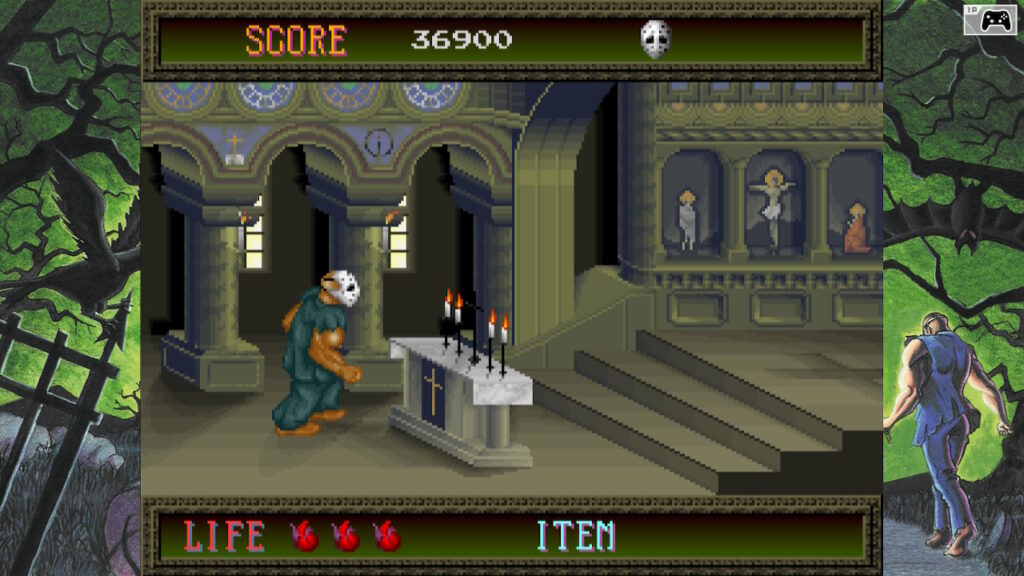
It is as if actual tortured souls, deranged degenerates, or possibly an machete wielding maniac were responsible for the sprite art. The filthy and grimy earth tones create a shocking and stark contrast with the bloody imagery.
If you are playing Splatterhouse via Namco Museum on Nintendo Switch then you’ll be in luck, because this is the uncensored version. In the past, there have been versions where changes were done to the graphics. Some inverted crosses were removed, gore and blood levels were dialed back, and the meat cleaver weapon was removed.
In Namco Museum, all cut content is seemingly restored. Rick’s mask is back to the stark white, Voorhees style goalie mask, and even the severed hands flip him the middle-finger in the fifth stage. If you wish to have a definitive Splatterhouse experience around Halloween, this is the version to play.
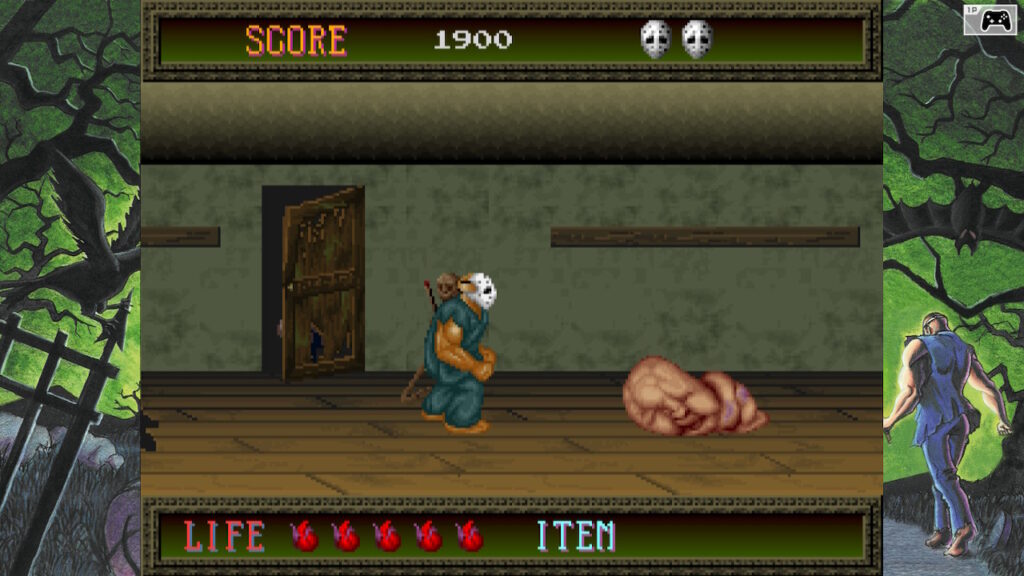
Gameplay in Splatterhouse is as brain-dead as the undead that swarm Rick. The only appeal for it now is the ambiance the game emanates while celebrating Halloween. The absurd and unfair difficulty do help enhance the sadistic atmosphere. The authentic seediness of the game is the only appeal it has going for it.
The charm can only last for so long. Splatterhouse is mercifully, very short. It clocks in roughly over 40 minutes if you know what to expect. If you are playing it in the Namco Museum, there is a save state option where it is possible to cheat your way through tough bosses.
At that point, why even bother? Learning to enjoy losing and memorizing enemy placement and boss patterns is less tedious.
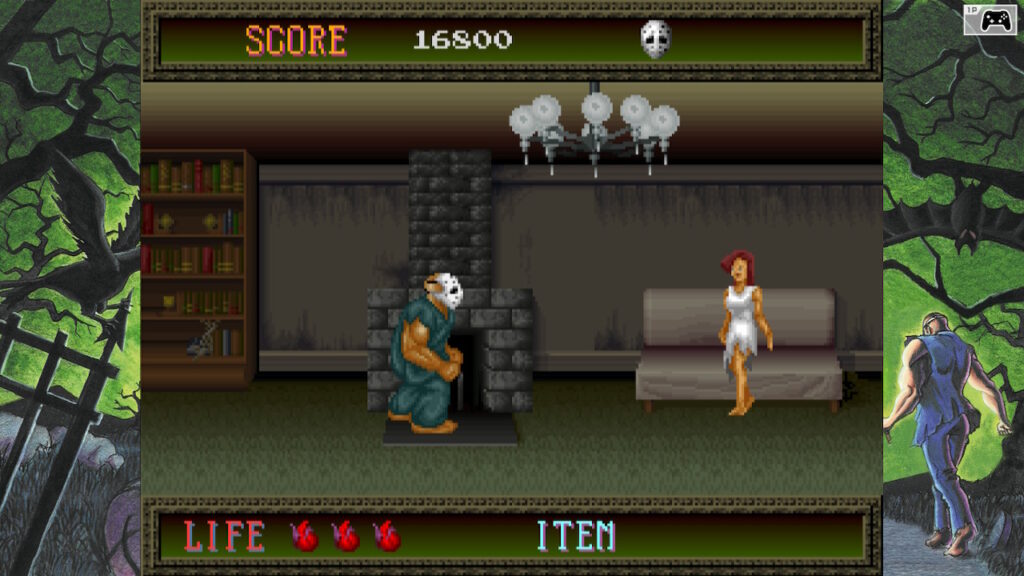
The original Splatterhouse might not have set the world on fire, and neither did its superior sequels. It was always a weird curio in Namco’s oeuvre from a time when copyright laws with video games were more loose. The quaint charm of being a Jason Voorhees knock off was always what held it in the hearts of fans.
It is not often when video games have you play as a monster- especially a monster in a horror themed game made in Japan. Splatterhouse may not be much, but it did break the mold by being one of the first of its kind.
Despite its very obvious flaws, it is not an unplayable mess. It is obnoxious and cruel at worst, but never a broken piece of garbage. Its charm is just enough to make it appealing and amusing.
Splatterhouse was reviewed on Nintendo Switch using a personal copy from the Namco Museum compilation. You can find additional information about Niche Gamer’s review/ethics policy here.